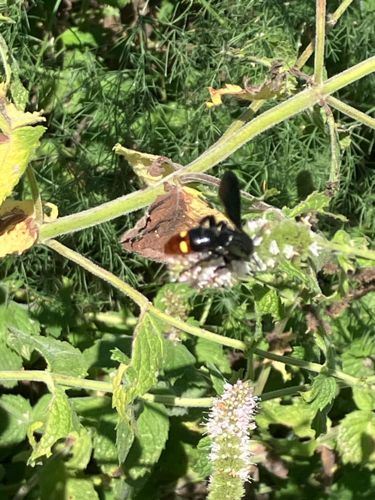Velvet Ant (likely a species of Dasymutilla)
Scientific Name: Dasymutilla (Genus, specific species cannot be determined definitively from the image)
Order & Family: Order: Hymenoptera, Family: Mutillidae
Size: Generally range from 0.5 to 2.5 cm (0.2 to 1 inch) in length, varying by species.

Natural Habitat
Velvet ants are found in a variety of habitats, including sandy areas, fields, meadows, forests, and suburban gardens. They prefer areas with loose soil where host insects can build their nests.
Diet & Feeding
Adult velvet ants primarily feed on nectar from flowers and water. The larvae are external parasites of the pupae and larvae of other insects, mostly ground-nesting bees and wasps.
Behavior Patterns
Velvet ants are solitary wasps. Females are wingless and resemble large, hairy ants, while males are winged. Females are known for their extremely painful sting, hence the nickname "cow killer". They are active during the day, especially in warmer weather, foraging for hosts for their larvae. The females are quick-moving and can often be seen running on the ground or among vegetation. Males fly in search of females. Larvae are parasitic on the larvae and pupae of other ground-nesting bees and wasps.
Risks & Benefits
The main risk associated with velvet ants is their extremely painful sting, delivered by the wingless female. While the sting is not medically significant for most people (unless allergic), it is considered one of the most painful insect stings. They are generally not aggressive but will sting if handled or stepped on. As beneficial aspects, their larvae help to control populations of other ground-nesting insects, including some pest species.
Identified on: 8/22/2025